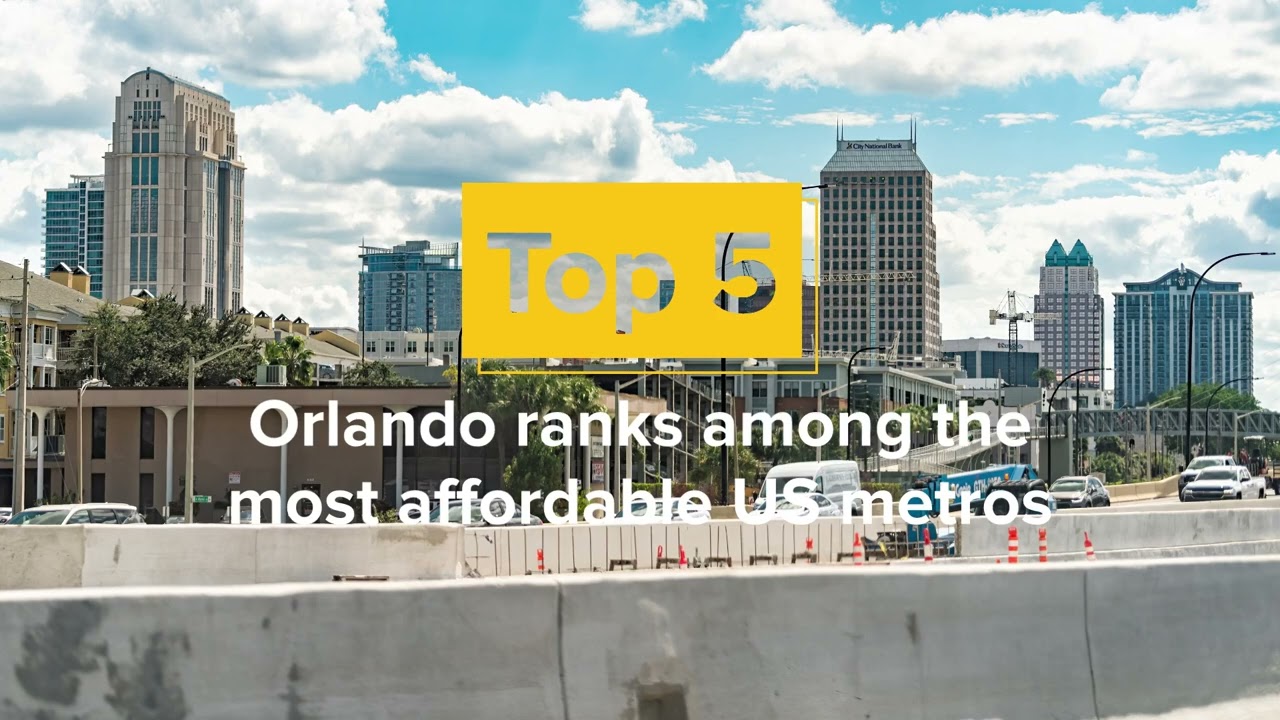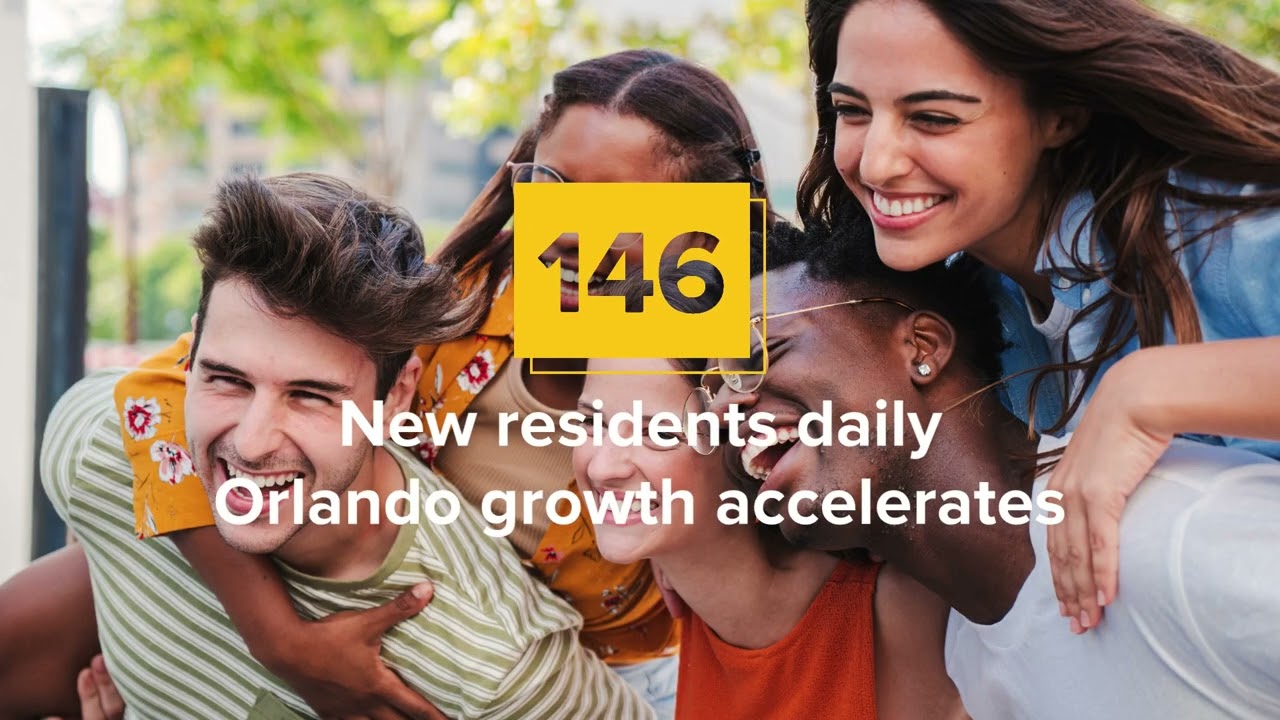Orlando’s housing market sits at a fascinating point in 2024. At $442,500, our median home price ranks 16th among the 30 largest U.S. metro areas – right in the middle of major markets like Phoenix ($469,500) and Baltimore ($426,600).
The numbers paint an interesting picture of change in our local market. While cities like San Francisco saw minimal growth (0.7%) in the past year, Orlando’s housing market grew by 1.4%. This modest but steady growth puts us in a sweet spot compared to markets that saw declines, like Austin (-0.8%) and Tampa (-1.2%).
But what really catches my eye in the data is Orlando’s housing cost index of 86.8 – significantly below the national average of 100. This means our housing costs run about 13% lower than the U.S. average, despite our position as a major metropolitan area.
Home prices in Orlando vs. other major markets
Let’s look at where Orlando fits in the national housing picture. At $442,500, our median home price sits 5.7% above the national average of $418,700. But here’s where it gets interesting – we’re still far more affordable than many comparable sunny destinations.
Here’s how Orlando stacks up against similar markets in Q3 2024:
Source: National Association of Realtors
Some key findings from the data:
- We’re priced 5.8% lower than Phoenix ($469,500)
- Our homes cost 29.8% less than Austin ($481,800)
- Miami prices run 42.4% higher than Orlando at $630,000
The year-over-year changes tell an interesting story too. While Orlando saw a modest 1.4% price increase, other Florida markets moved differently:
- Tampa: -1.2% decrease
- Miami: +4.6% increase
- Jacksonville: +3.7% increase
What sets Orlando apart is our stability. Among the top 30 metro areas:
- 8 markets saw price decreases
- 5 markets had increases over 5%
- Orlando landed in the middle with steady growth
Cost of living impact on housing
When we talk about Orlando’s housing costs, we need to look at the full picture. Our housing cost index of 86.8 makes us one of the most affordable major cities in the U.S. This number means we pay about 13% less for housing than the national average.
Orlando’s cost indices in Q3 2024
Source: Council for Community and Economic Research
Here’s how our housing costs compare to other Florida cities:
| City | Housing Index | Difference from Orlando | Equivalent to Orlando’s $2,000 Rent |
|---|---|---|---|
| Orlando | 86.8 | baseline | $2,000 |
| Miami | 158.2 | 82.0% higher | $3,642 |
| Tampa | 96.1 | 10.7% higher | $2,214 |
| Jacksonville | 89.2 | 2.8% higher | $2,058 |
Source: Council for Community and Economic Research
The big story? Our overall cost of living score of 94.9 ranks Orlando as the 5th most affordable major metro area in the U.S. This puts us in great company:
- St. Louis: 89.7
- San Antonio: 92.5
- Minneapolis: 93.8
- Houston: 94.7
- Orlando: 94.9
What this means for local businesses
- Lower housing costs help attract talent from expensive markets
- Workers keep more of their paycheck compared to coastal cities
- Real estate investments offer better value than higher-priced markets
Monthly sales trends
The Orlando housing market showed distinct patterns in Q3 2024. With 7,556 home sales in the quarter, we’ve seen some shifts worth noting for anyone watching our local real estate scene.
Orlando housing market activity – Q3 2024
Source: Orlando Regional Realtor Association
Market changes update
- Sales volume dropped 12.1% compared to Q3 2023
- Inventory rose to 11,560 homes – highest since 2015
- Median price growth slowed to 2.7% by quarter’s end
What’s moving the market
- Price Points
- Q3 average: $380,000
- Peak price: $450,000 (August)
- September showed first signs of price moderation
- Market Volume
- New listings increased each month
- Average time on market: 45 days
- Buyer activity slowed despite more choices
- Inventory Impact
- Active listings up 15% from Q2
- More options for buyers
- Price negotiations becoming more common
These numbers point to a market that’s finding its balance. For buyers, this means more choices and negotiating power. For sellers, it signals a need for realistic pricing.
What this means for Orlando residents
Let’s talk real numbers for Orlando homebuyers. With median home prices at $442,500 and average weekly wages at $1,095, housing affordability hits different income groups in unique ways.
Income vs. housing costs
- Average annual wage: $56,943
- Monthly mortgage payment on median home: $2,850*
- Property tax rate: Much lower than comparable cities
- Effective tax rate with homestead: $11,459 annually on median home
*Based on 20% down, 30-year fixed rate
Orlando job salaries and housing affordability – Q3 2024
Where Orlando stands out
- Lower property taxes
- Orlando’s property taxes run lower than 21 of the top 30 metro areas
- Annual savings compared to Miami: About $600 on median-priced home
- Wage growth
- 8.5% increase in weekly wages over past year
- Outpacing housing cost increases (2.7%)
- Cost benefits
- Housing costs 13.2% below national average
- Utilities cost just 1.1% above national average
- No state income tax saves residents thousands annually
Affordable Orlando suburbs – Q3 2024
First-time buyers find good options in growing suburbs like Winter Springs and Sanford. These areas offer more affordable entry points while keeping commute times reasonable. Plus, Florida’s lack of state income tax helps residents keep more of their earnings, offsetting housing costs.
| Affordable Areas | Median Price | Population Growth | Key Features |
|---|---|---|---|
| Winter Springs | $375,000 | +2.0% since 2020 | Strong schools, suburban setting |
| Sanford | $360,000 | +5.7% since 2020 | Historic downtown, SunRail access |
| Kissimmee | $380,000 | +4.4% since 2020 | Close to theme parks |
| Oviedo | $390,000 | +0.5% since 2020 | Family-friendly community |
| Clermont | $385,000 | +10.3% since 2020 | Lake access, growing suburb |
| St. Cloud | $370,000 | +5.1% since 2020 | Lakefront community |
| Altamonte Springs | $365,000 | +2.6% since 2020 | Shopping and dining hub |
Source: Orlando Regional Realtor Association, U.S. Census Bureau
Business impact and market outlook
Orlando’s housing market directly affects our business community, from retail locations to workforce attraction. Let’s look at what the numbers tell us about where we’re headed.
Business growth signals
Orlando’s business sector shows strong growth in 2024, with employment and population trends directly impacting our housing market. Our job market added 19,800 new positions in the past year, keeping unemployment at 3.5% – notably below the national rate of 4.0%. The professional services sector leads this growth with 285,800 jobs, representing 19% of our workforce.
Population numbers tell a insightful story of their own. Orange County now houses 1,471,416 residents, marking a 4.4% increase since 2020. The broader Metro Orlando area has grown to 2,833,764 residents, with an impressive annual growth rate of 6.0% since 2020.
Orlando commercial real estate overview – Q3 2024
Orlando growth areas
Major corporations are taking notice of Orlando’s growth potential. ThreatLocker recently announced 1,000 new jobs, while IRadimed broke ground on a 60,000-square-foot facility. In Lake County, Kroger’s new fulfillment center brings 978 jobs to the area.
Major business developments:
- ThreatLocker: 1,000 new jobs
- IRadimed: 60,000 sq ft facility, 160 new jobs
- Kroger: 978 new jobs in Lake County
- Mitsubishi Power: 850 jobs in Lake Mary
- Red6: 101 new jobs in Orlando
- Medlin Ramps: 507 new jobs
This growth creates unique opportunities for businesses. Our housing market offers better affordability than Miami or Tampa, helping companies attract talent from more expensive markets. The suburbs continue expanding, providing diverse housing options for different income levels. Our lower cost of living compared to coastal cities gives businesses a competitive edge in recruitment.
Commercial development follows these trends. While the office market adapts to hybrid work models, industrial space demand stays strong. New business parks planned for southeast Orlando signal continued expansion. Fast-growing areas like Lake Nona lead in healthcare and tech development, while Winter Garden and Clermont show impressive residential growth rates of 8.2% and 10.3% respectively since 2020.
What this study tells us
The data tells a clear story about Orlando’s housing market in 2024. At $442,500, our median home price places us in the sweet spot – high enough to show market strength but low enough to keep us competitive with other major cities.
Quick stats that matter:
- Housing costs 13.2% below national average
- 6.0% population growth since 2020
- 8.5% wage growth in past year
- 19,800 new jobs added
For business owners: Our mix of affordable housing and strong job growth makes Orlando attractive for expanding companies. With office space at $27.42 per square foot and industrial space at $10.29, we offer better value than Tampa ($30.12) or Miami ($55.79).
For residents: While prices have risen 2.7% this year, our housing market remains more affordable than most major cities. Plus, rising wages and low unemployment suggest continued stability.
The big picture: Orlando ranks as the 5th most affordable major metro in the U.S., with a cost of living score of 94.9. This combination of growth and affordability sets us apart from other fast-growing cities.







